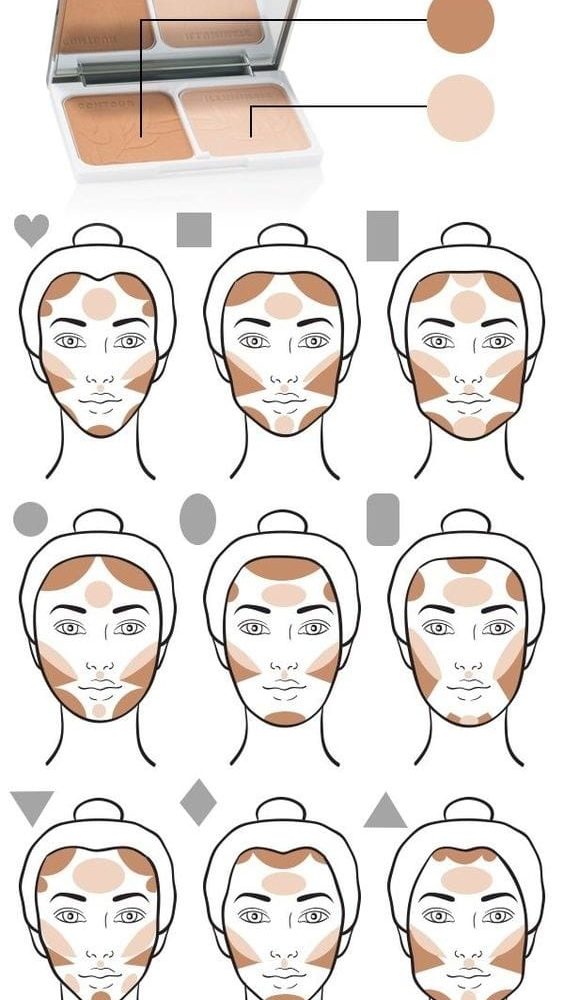Contour
How to Choose the Right Contouring Kit for You?
You should be guided by both your skin tone and type when buying a contouring makeup product or kit, since you want to have a flawless look complementing your natural features.
By Skin Tone
It’s easy to look in the mirror and tell if your skin is lighter or darker. However, finding the right shade of contouring makeup for a day-to-day look relies on a little more than just the old adage, “choose a color a few shades darker than your skin tone.”
Since your contour is supposed to look like a shadow, the contour colour you choose has to appear neutral on your skin, the way a shadow would be. This is why bronzers don’t usually work well for contouring – they lean towards too orange to actually look like shadows on most people’s skin, which doesn’t work for anyone.
That’s why, before you choose a contour color, it’s important you figure out what your skin’s undertones are, and chose a contour shade with similar undertones. Our skin’s undertones will normally be categorized as warm, cool, or neutral.
Try to think of your skin’s undertones as a mixture of the three primary colors. Looking at your veins and seeing if they lean towards green (warm or olive undertones), blue (neutral undertones), or purple (cool undertones) will also help you know what your undertones are.
A perfect balance of warm tones like yellow, and cool tones like blue and red would make your skin neutral. Those with neutral undertones to their skin should stick to a contour shade that is as neutral as possible, with perhaps just a hint of grey.
Those with warm undertones usually have extra yellow in their skin, while a mixture of yellow and blue is an olive skin tone, which is more common in those with medium skin. A neutral contour product will also work well in this case if you’re only going for a soft contour. For a heavier contour it’s better to go with a contour shade that also has a hint more yellow in it.
Pinkish undertones due to just red or red and blue are a sure sign of cool skin. A cool toned contour shade for you should not have a lot of pink or red in it – instead it’ll seem like a slightly blue taupe shade.
By Skin Type
• Normal Skin: If you have normal skin, with medium sized pores and just a bit of oil production throughout the day, you can opt for both cream contour or powder contour. You can choose which contouring makeup products are right for you based on which technique you find is easier for you to work with, or whether you like more natural or heavier makeup look.
• Dry Skin: If you have drier skin with smaller pores and little to no oil production, it’s possible you’ll prefer an overall dewier look to your skin, to avoid looking dry and flakey. This has less to do with your contour and more to do with your foundation, as you might want to avoid setting your foundation with powder, which tends to take luminosity away from the skin.
It’s much harder to blend powder contour shades when they’re applied over wet foundation, so in that case, stick to cream contour makeup. If you do set your foundation with powder despite having dry skin, a powder contour will work just fine with your skin as long as it has a buttery texture and not a chalky one.
• Oily Skin: If you have larger pores and your skin produces a lot of oil throughout the day, you might want to avoid layering cream products on your skin, as they can contribute to you looking shiny throughout the day. If you truly prefer the look of a cream contour, make sure to use thinner layers. However, opting for a powder contour will certainly be easier and it’ll help keep those oils in check.


Recent Comments